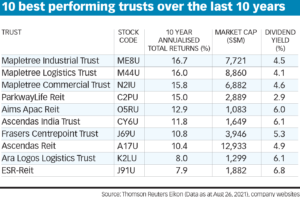
The article provides information on the results of technical analysis research in developed and emerging markets. It also discusses the fundamental assumptions that underlie technical analysis. It will explain the Market indicators that technical analysts use and the drawbacks to using computers to do this. The article also includes information about technical analysts' use of research to assist them in making decisions.
Technical analysis research results in developed and emerging countries
A lot of research has been done in recent years to determine whether classical technical analysis is a good way to invest in stocks or other assets. This type of investing can be profitable in both developed and developing countries. However, it's not clear if this is the case in either. The authors of this paper review several studies examining the profitability of this method, both in emerging and developed countries.
Park and Irwin reviewed the most recent studies, and they concluded that most of these studies found positive results using technical analysis. These studies are not without their problems. For example, data manipulation or the development of ex post strategies.

Technical analysis: The fundamental assumptions
Fundamentally, technical analysis research is based on the idea that price patterns tend to repeat themselves. This principle is well-known and has been used for over 100years. Technical analysts use price charts as a way to identify these patterns and make predictions about their future behavior. But technical analysts should be careful before trading stocks.
First, technical analyze has its limitations. Although it can be useful in certain cases, it is often not able to predict the future. This is largely due to the fact that lagging indicators only tell us about past events and can't reliably predict future ones. It is important to be careful when using lagging indicators. Instead, look for trends that aren't just a result of past events.
Technical analysts use market indicators
Technical analysts can use many market indicators such as momentum readings, breakout signals, volume patterns and moving averages. These indicators give traders a different perspective on price action and help them to identify potential profit points. These indicators are mathematically derived from trading volume, investor sentiment, open interest data, price and trading volume. Traders use these indicators to identify entry and exit points in the market, and they may use them alone or in combination.
Technical analysts may also use the relative weakness index as an indicator. This indicator is used to determine the strength of a trend and can be useful when it is too strong or too weak. Other indicators of common interest include the Bollinger Bands, and the moving median (MACD). These indicators provide information about the demand and supply of security and are crucial in identifying overbought or oversold levels.

There are downsides to using computers in technical analysis
The use of computers for technical analysis research has a number of advantages, but it also has its disadvantages. Some people believe that it doesn't give useful information and that the patterns visualized can be misleading. It can be very useful in identifying trends. However, it should not be used alone.
A computer is a great tool for technical analysis research because of its speed. It's much easier to analyze the market with real-time data than it would with a human analyst. However, one drawback is the lack of training on how to read charts. This lack of experience can lead analysis paralysis.
FAQ
What is security in the stock exchange?
Security can be described as an asset that generates income. Shares in companies is the most common form of security.
There are many types of securities that a company can issue, such as common stocks, preferred stocks and bonds.
The earnings per shares (EPS) or dividends paid by a company affect the value of a stock.
A share is a piece of the business that you own and you have a claim to future profits. If the company pays a payout, you get money from them.
Your shares may be sold at anytime.
What is a REIT?
An entity called a real estate investment trust (REIT), is one that holds income-producing properties like apartment buildings, shopping centers and office buildings. They are publicly traded companies that pay dividends to shareholders instead of paying corporate taxes.
They are similar companies, but they own only property and do not manufacture goods.
How can I invest in stock market?
You can buy or sell securities through brokers. Brokers can buy or sell securities on your behalf. When you trade securities, you pay brokerage commissions.
Brokers often charge higher fees than banks. Banks will often offer higher rates, as they don’t make money selling securities.
A bank account or broker is required to open an account if you are interested in investing in stocks.
A broker will inform you of the cost to purchase or sell securities. He will calculate this fee based on the size of each transaction.
Ask your broker about:
-
Minimum amount required to open a trading account
-
What additional fees might apply if your position is closed before expiration?
-
What happens when you lose more $5,000 in a day?
-
How long can positions be held without tax?
-
How much you can borrow against your portfolio
-
whether you can transfer funds between accounts
-
How long it takes to settle transactions
-
The best way buy or sell securities
-
How to Avoid Fraud
-
How to get help when you need it
-
If you are able to stop trading at any moment
-
Whether you are required to report trades the government
-
If you have to file reports with SEC
-
Do you have to keep records about your transactions?
-
whether you are required to register with the SEC
-
What is registration?
-
How does it affect me?
-
Who is required to be registered
-
When should I register?
Statistics
- The S&P 500 has grown about 10.5% per year since its establishment in the 1920s. (investopedia.com)
- Individuals with very limited financial experience are either terrified by horror stories of average investors losing 50% of their portfolio value or are beguiled by "hot tips" that bear the promise of huge rewards but seldom pay off. (investopedia.com)
- Even if you find talent for trading stocks, allocating more than 10% of your portfolio to an individual stock can expose your savings to too much volatility. (nerdwallet.com)
- Ratchet down that 10% if you don't yet have a healthy emergency fund and 10% to 15% of your income funneled into a retirement savings account. (nerdwallet.com)
External Links
How To
How to create a trading plan
A trading plan helps you manage your money effectively. It allows you to understand how much money you have available and what your goals are.
Before you begin a trading account, you need to think about your goals. It may be to earn more, save money, or reduce your spending. You may decide to invest in stocks or bonds if you're trying to save money. You could save some interest or purchase a home if you are earning it. Perhaps you would like to travel or buy something nicer if you have less money.
Once you have a clear idea of what you want with your money, it's time to determine how much you need to start. This will depend on where you live and if you have any loans or debts. You also need to consider how much you earn every month (or week). Your income is the net amount of money you make after paying taxes.
Next, you need to make sure that you have enough money to cover your expenses. These include bills, rent, food, travel costs, and anything else you need to pay. These all add up to your monthly expense.
Finally, figure out what amount you have left over at month's end. This is your net available income.
Now you know how to best use your money.
You can download one from the internet to get started with a basic trading plan. Ask an investor to teach you how to create one.
Here's an example.
This graph shows your total income and expenditures so far. It also includes your current bank balance as well as your investment portfolio.
Here's an additional example. This was created by a financial advisor.
It will let you know how to calculate how much risk to take.
Remember: don't try to predict the future. Instead, be focused on today's money management.